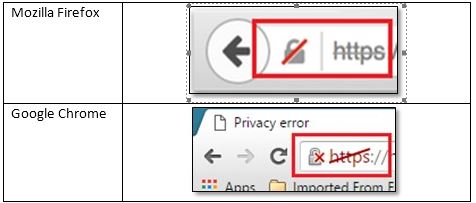Browse Securely with HTTPS
As we share more and more of our personal information on the internet, it's always important to ensure that others can't capture and read that information while it's transmitted. For this reason, HTTPS (HyperText Transfer Protocol Secure) is one of the internet's most useful tools. Through the magic of math, HTTPS encrypts data as it travels to its destination and makes sure that the person on the other end of the transaction is actually who they say they are.
You probably already use HTTPS in your everyday life, even if you don't realize it. Most major websites use HTTPS to help protect your passwords and financial information from being stolen.
How can you tell if your connection is secure? All of the major internet browsers will display a lock icon in the address bar if your connection is secure.

Clicking on that icon will give you options for more information about the identity of the party on the other end.

When the connection is not secure, a broken lock will show up.

You may also receive a full page warning informing you that the connection is insecure, such as this one from Microsoft Edge.

If you receive any of these warnings and have concerns about the validity of the website you're visiting, take a minute to verify that you're visiting the right location. If you're unsure of how to proceed, let adminithelp@ucdavis.edu know, and they let you know.
